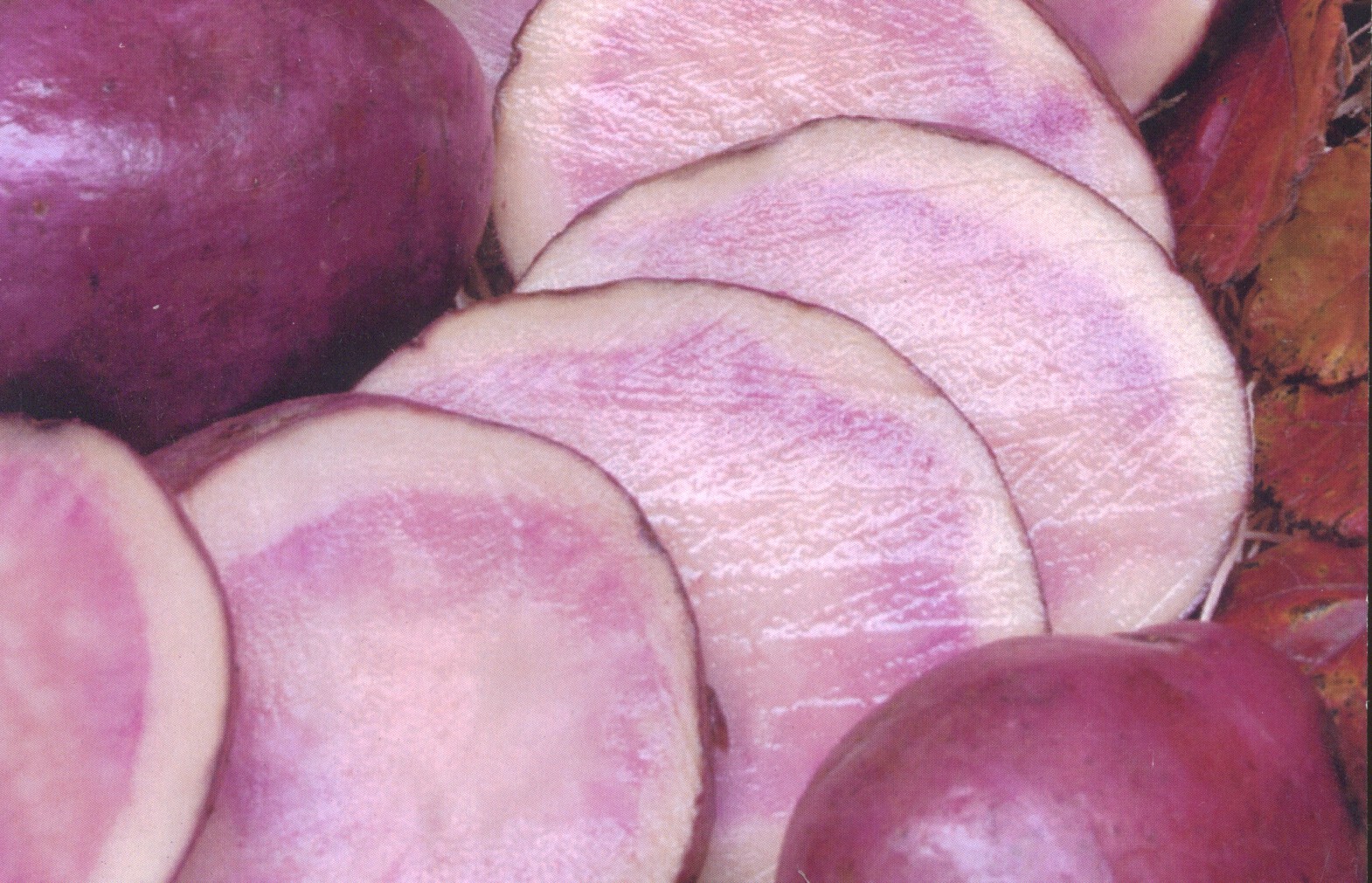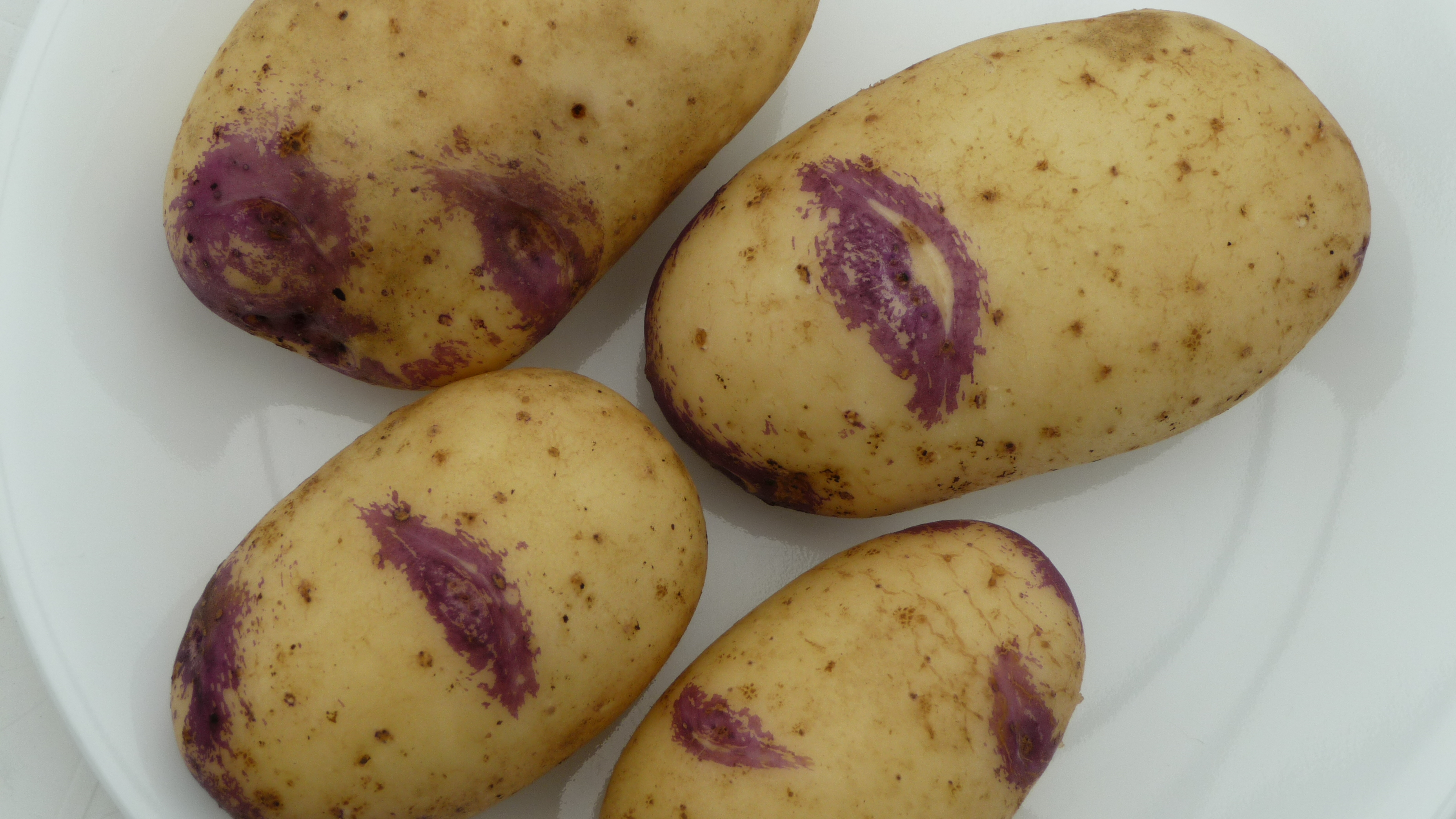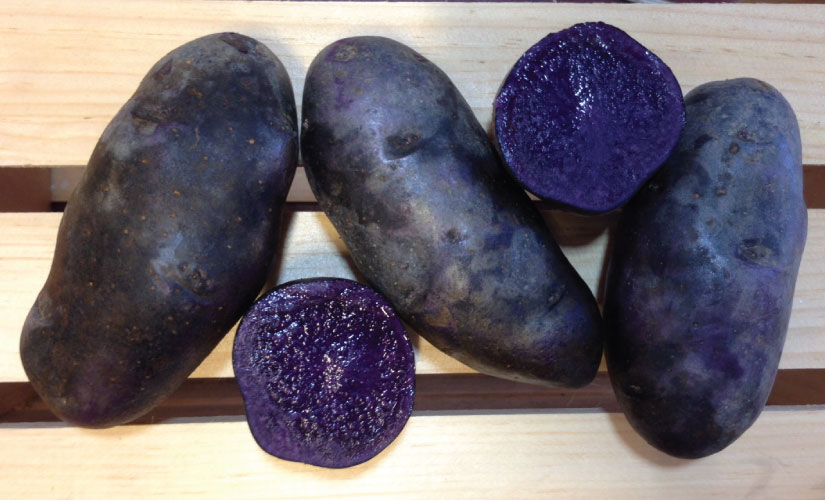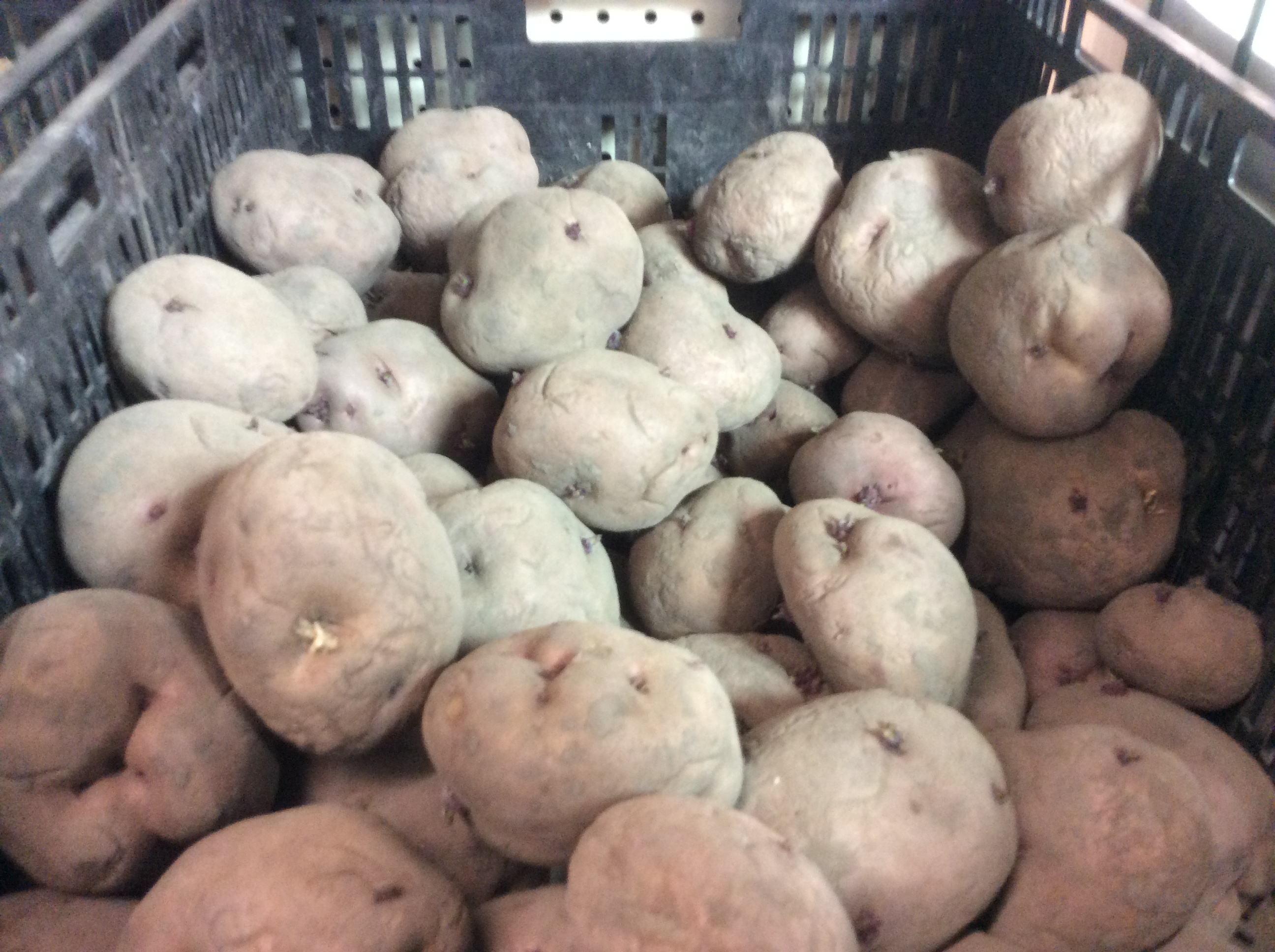The traditional time to start planting your potatoes is after St. Patrick’s Day, which is one of nature’s pleasant little ironies. While the Irish are of course strongly associated with the potato, these terrific tubers have been cultivated and enjoyed all around the world. And each culture has it’s own favorite kind of potato. If you’ve never ventured beyond the classic Russet or Yukon Gold, you’re missing out on a world of flavor! Some of these unique potato varieties can only be found in your own garden. Here are a few of our favorite specialty spuds!

Gourmet Adirondack Red The Gourmet Adirondack potato is red through and through, from its dark red skin to its unusual reddish-pink flesh. These red potatoes keep their rosy color when cooked adding a lovely red shade to your potato salads, a light pink hue to mashed potatoes and darker red to pan-fried or roasted dishes. Not only that, but Gourmet Adirondack reds are high in antioxidants and other nutrients
Fingerling Russian Banana Fingerling potatoes are short, stubby potatoes that are popular in many cuisines around the world. True to their name, these Russian Banana fingerlings grow in long, curved shapes and have light yellow skins and flesh. In fact, this potato is so tender, it sometimes turns up as a pizza topping! Packed with potassium and vitamin C, these potatoes are also excellent for roasting, boiling or mashing.

Blue Belle This year, all of the garden magazines and blogs will tell you: purple is in. And these Blue Belle potatoes with their creamy yellow skin splashed with blue around the eyes are right on trend! Is it any wonder that these chic potatoes are natives of France? Blue Belles are early to mature and great for baking, boiling and mashing. Fun Fact: The French word for potatoes is "pommes de terre", which literally translates to "apples of the earth!"

Purple Molly Magic If you really want to go all in with purple, check out these magnificent Molly Magic potatoes. Their skin is such a deep purple that almost tips into black. And their flesh is an eye-poppingly vivd royal purple that retains its color even when boiled. These tubers have a rich, earthy flavor, and are especially great when roasted.

La Soda Red These classic red potatoes have been an American favorite since their introduction in 1953. They have smooth red skin and creamy white flesh. La Soda’s are delicious just about anyway you fix potatoes – fried, boiled, roasted or baked. Above all, though, La Soda’s are a reliable crop. They are tolerant of heat, drought and cold and are one of the longest keeping red potatoes available.
Potato Growing Tips Potatoes are usually grown from smaller potatoes called seed potatoes. They look like regular potatoes you’d get at King Soopers, but they’re a little different. Often, potatoes from the grocery store have been sprayed with a growth inhibitor to prevent them from sprouting all over the produce department. Seed potatoes are specially picked to grow.
Once you pick out your seed potatoes, cut them into four parts. Each quarter should have at least two eyes. Wait a day or two before planting to allow the cut parts to scab over. This will help them retain moisture and protect against rotting and disease. Next, pick a spot in full sun and dig a hole 8” to 10” deep, about the length of a normal trowel. Amend generously withB.O.S.S.
Potatoes love the moisture, so water regularly. As the plant gets about 6” tall, mound up the dirt around it to support the plant and protect the roots. Then, cover the vine in loose soil to protect it from the sun. You’ll probably need to do this every couple of weeks as the vines grow larger. Potatoes are usually ready for harvest after 10 weeks; late summer if you planted in April or May. Harvest as soon as the plants wither and die. You can pull them up earlier, around mid-July, for New Potatoes.We also came across this neat video from the Farmer’s Almanac about growing potatoes in a trash can. We haven’t tried it yet, but it looks like fun!
